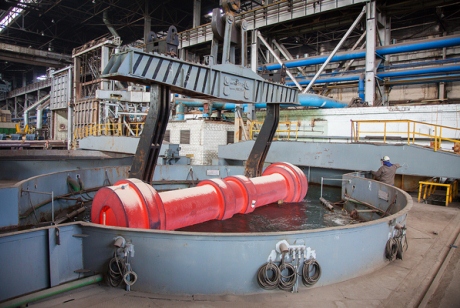Work may be halted on the Baltic nuclear power plant project as the possibility to export its power appears less certain.
The plant is in the Russian exclave of Kaliningrad, situated between Lithuania and Poland. The two reactors Rosatom is developing there are intended to export to both those countries as well as potentially Germany through an undersea connector.
It is a stand-out project for Russia: the first to be opened up to investment by European utilities; the first intended to export most of its output; and the first to use an Alstom-Atomenergomash steam turbine. Construction of the first VVER-1200 reactor began in February last year, with another one planned to follow.
 |
| The freshly forged 171 tonne rotor for Baltic 1's low-pressure steam turbine cooling at the factory of Atomenergomash's Ukrainian subsidiary EMSS (Image: Atomenergomash) |
However, Lithuanian energy minister Jaroslav Neverovič recently cast doubt on a proposed upgrade of the single grid connection between the nations. He remarked on local radio that there is no need to upgrade because Lithuania is not considering buying power from the Baltic plant. This could suggest there is only a limited chance of permission for a proposal by Russian grid operator InterRAO UES and its Lithuanian subsidiary to upgrade the connection from today's capacity of about 700 MWe to 1000 MWe. Lithuania, of course, has its own plan to bring on new nuclear capacity at Visaginas alongside its shut-down Ignalina plant.
In addition, InterRAO wants to build a new connection to Poland of up to 1000 MWe and set up a new HVDC cable under the Baltic Sea to carry 1000 MWe to Germany. All three new connections could allow the export of about 1800 MWe of the 2300 MWe the Baltic plant is slated to produce from 2018. But without these connections there is no customer for the plant's output, given that domestic demand in Kaliningrad only reaches about 780 MWe with this largely already met by a single fossil fuel plant.
Despite being 18 months into construction of its first unit, the Baltic plant is also progressing without the hoped-for foreign investors. One result of this growing uncertainty has been a round of discussions in the Russian industry on the plant's future, with one suggestion to build smaller reactors instead.
Researched and written
by World Nuclear News




_18570.jpg)
_18938.jpg)
_33584.jpg)
_82983.jpg)





